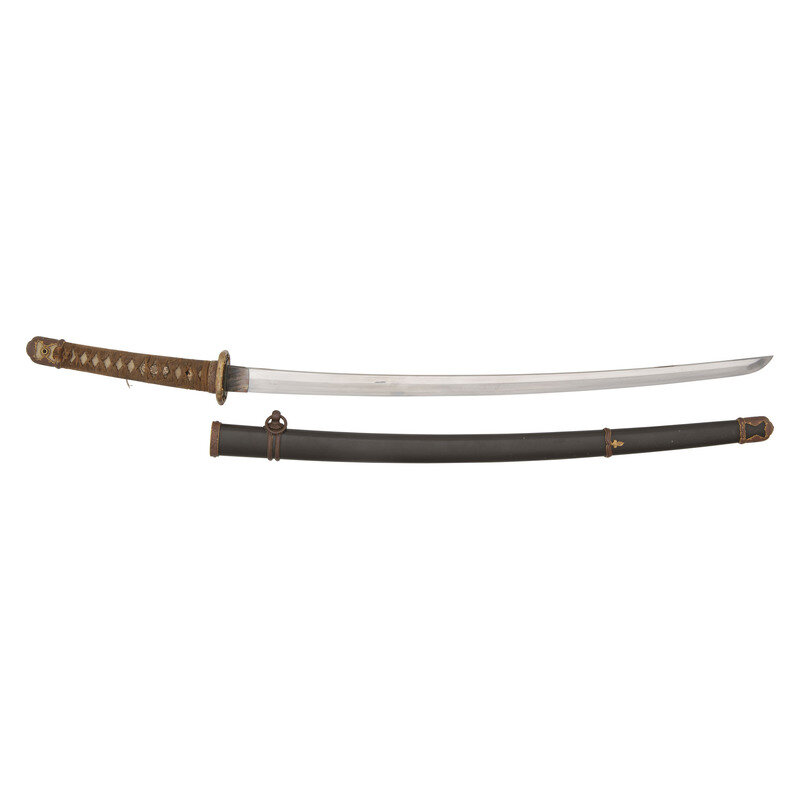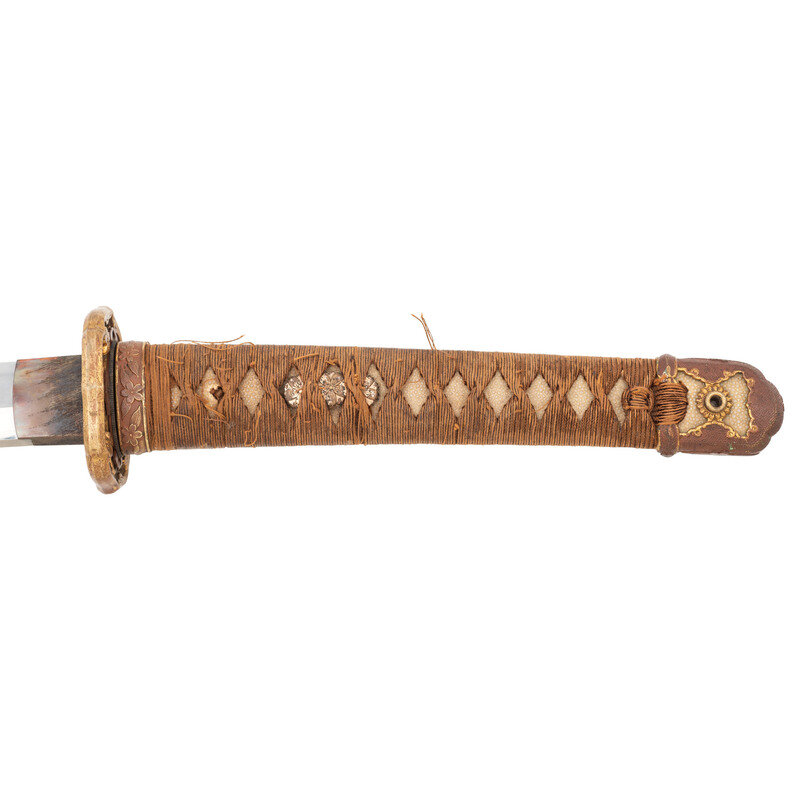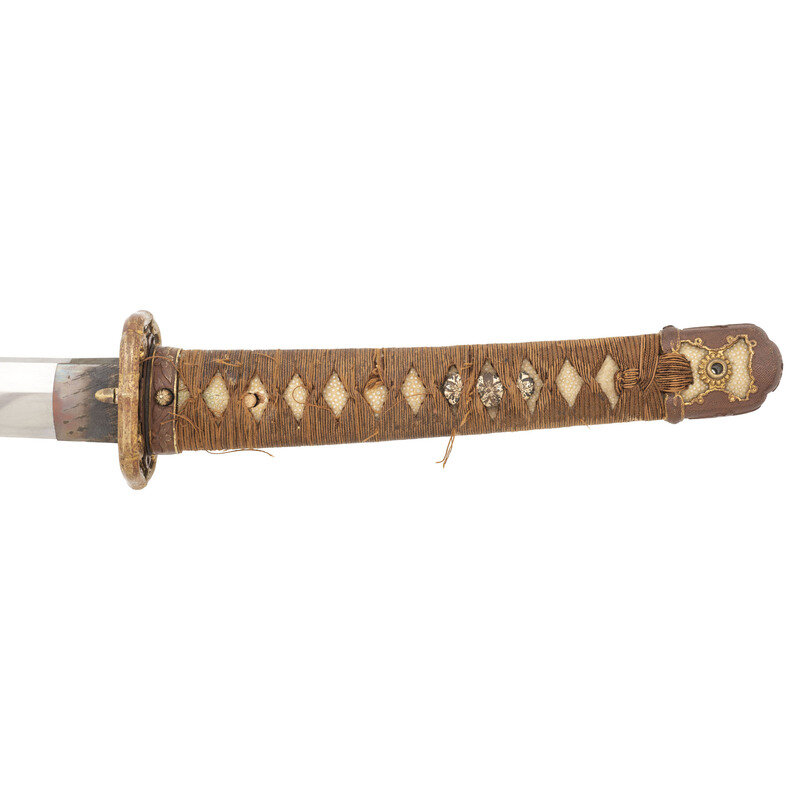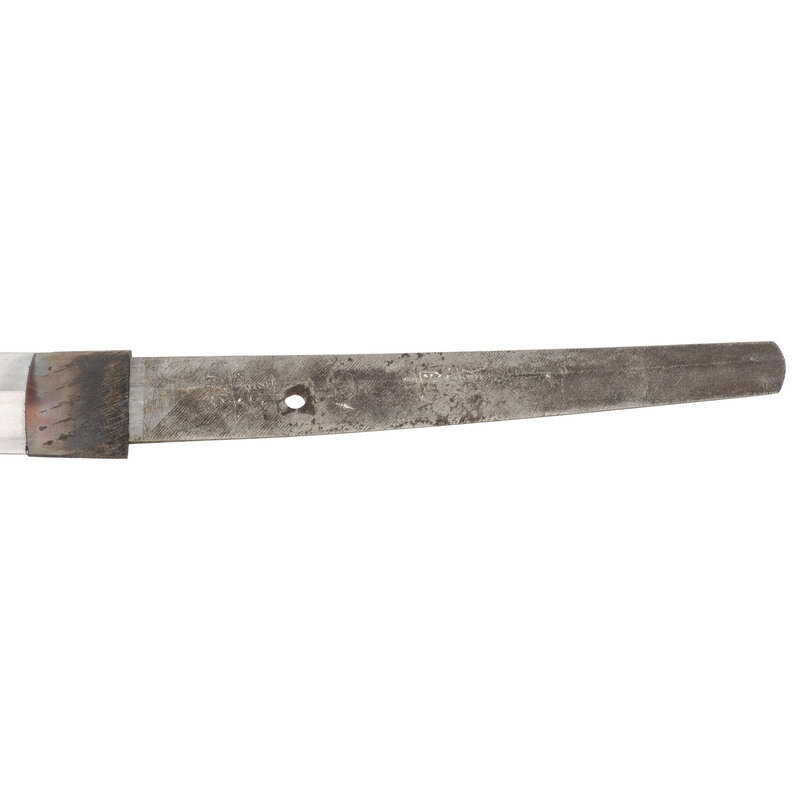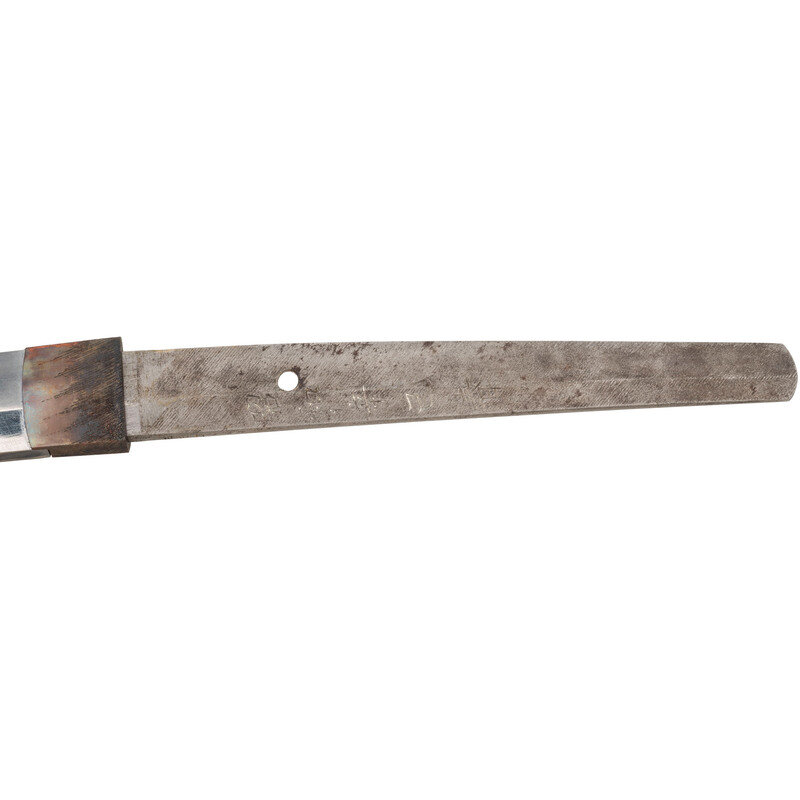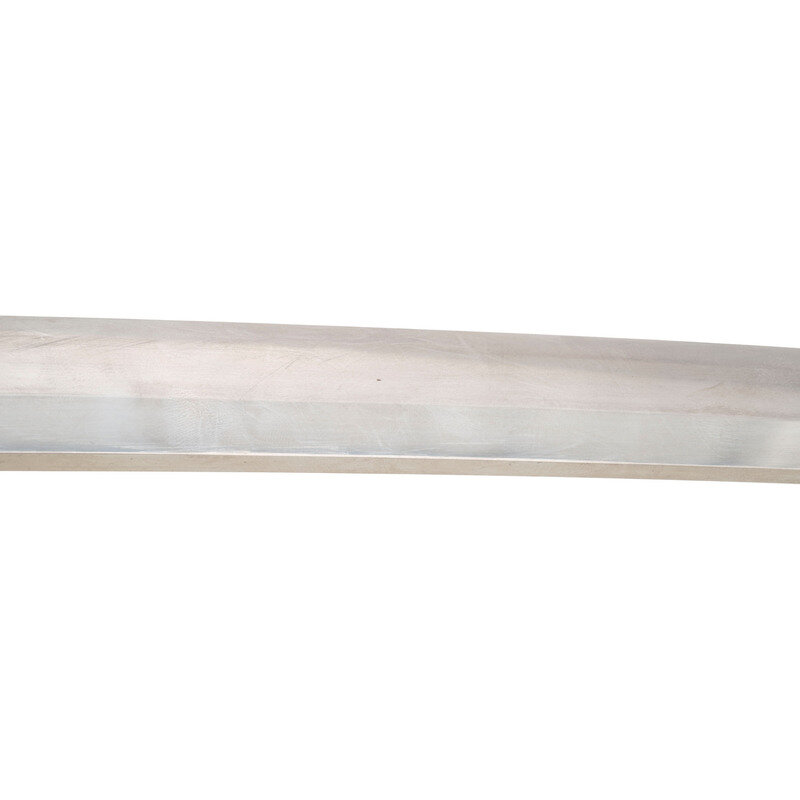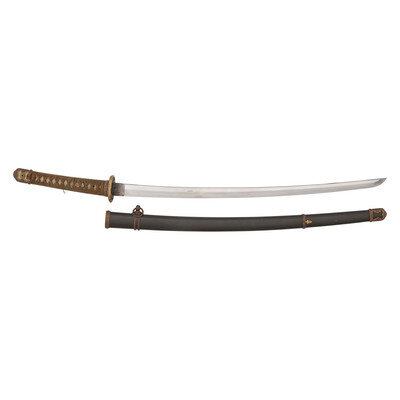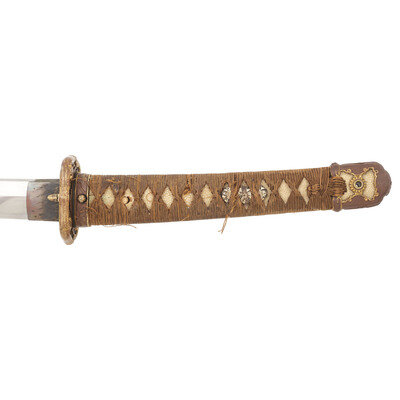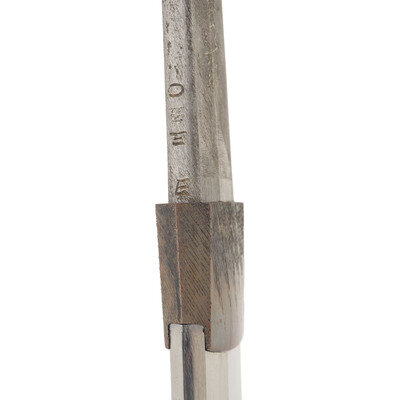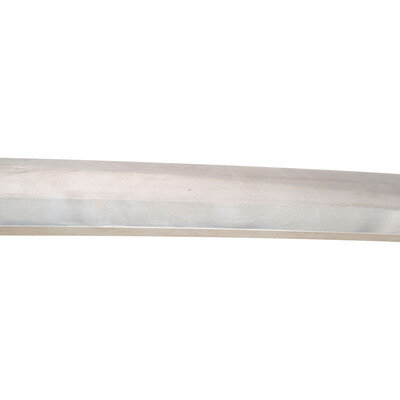Lot 201
Signed WWII Japanese "Koa Isshin/Mantetsu Steel" Shin Gunto
Sale 2030 - Arms, Armor and Militaria
Oct 23, 2024
10:00AM ET
Live / Cincinnati
Own a similar item?
Estimate
$1,200 -
1,800
Price Realized
$1,020
Sold prices are inclusive of Buyer’s Premium
Lot Description
Signed WWII Japanese "Koa Isshin/Mantetsu Steel" Shin Gunto
World War II
26.25" nagasa. 37.5" overall. Shinogi-zukuri blade with single hole tang and long mei to both sides. Mei translates to "Koa Isshin Mantetsu Saku Kore" and is dated "Sho Wa Kanoto Mi Haru" (Spring 1941) according to a dealer tag attached to saya. The tag also states that this item was "made from western scrap steel by the Dairen Railway Co. in Manchuria, China for the Japanese Imperial Army." Blade features a chu-kissaki, omaru boshi, ihori mune, sugu hamon, and muji hada. Mounts are of shin gunto style with painted steel scabbard, gilt copper fittings, brown ito, white same, and catch release spring.
The name "Koa-Isshin" was derived from a colonization/unification propaganda slogan used by Japan pre-1944 that loosely translates to, "Asia, one heart." These blades were non-traditionally made from western scrap steel and railroad tracks located in occupied Manchuria, China.
In 1937, with traditional tamahagane steel in short supply, an innovation by Dr. Kazuharu Kusaka in steel production allowed Japan to create incredibly durable katana blades using rod-in-tube construction. This technique was known to have created some of the strongest, most reliable, and most effective cutting blades produced by Japan during this period. During the initial cutting test of the first Mantetsu sword, the appraiser of the sword mistakenly attributed it as a Koto-era sword made by master swordsmith Tadayoshi of Hizen, stating that "only a Tadayoshi sword could cut like that." Japan immediately started production of the Koa Isshin Mantetsu swords following this appraisal, making about 400 a month.
The name "Koa-Isshin" was derived from a colonization/unification propaganda slogan used by Japan pre-1944 that loosely translates to, "Asia, one heart." These blades were non-traditionally made from western scrap steel and railroad tracks located in occupied Manchuria, China.
In 1937, with traditional tamahagane steel in short supply, an innovation by Dr. Kazuharu Kusaka in steel production allowed Japan to create incredibly durable katana blades using rod-in-tube construction. This technique was known to have created some of the strongest, most reliable, and most effective cutting blades produced by Japan during this period. During the initial cutting test of the first Mantetsu sword, the appraiser of the sword mistakenly attributed it as a Koto-era sword made by master swordsmith Tadayoshi of Hizen, stating that "only a Tadayoshi sword could cut like that." Japan immediately started production of the Koa Isshin Mantetsu swords following this appraisal, making about 400 a month.
This lot is located in Cincinnati.
Condition Report
Contact Information
Auction Specialists
